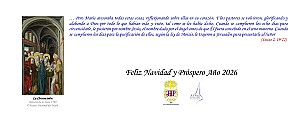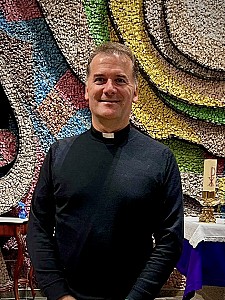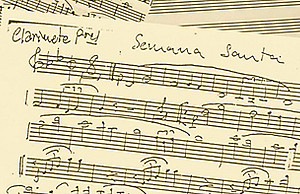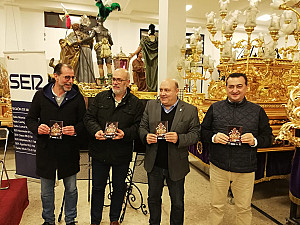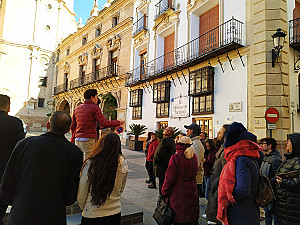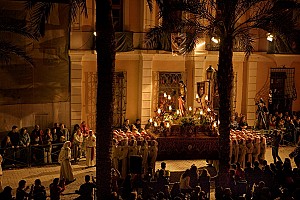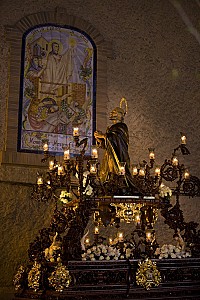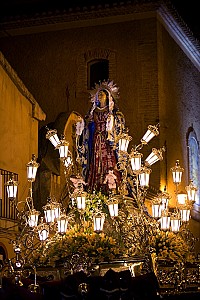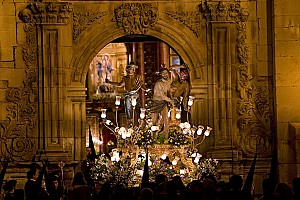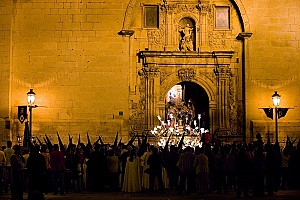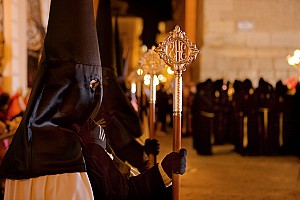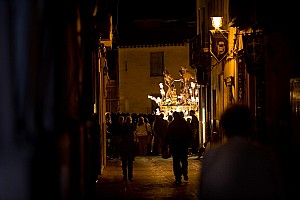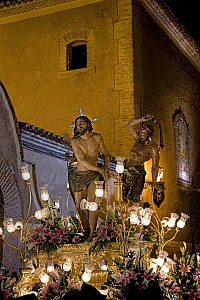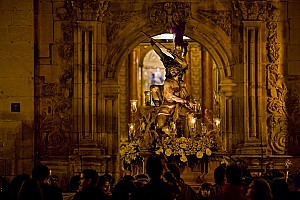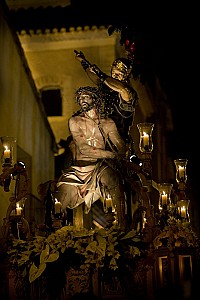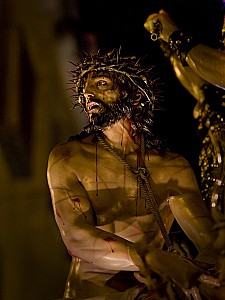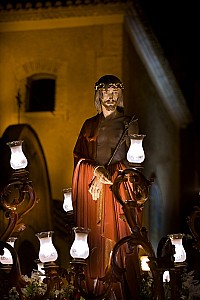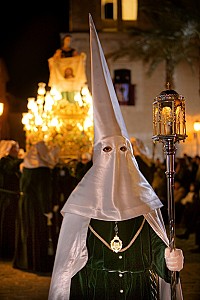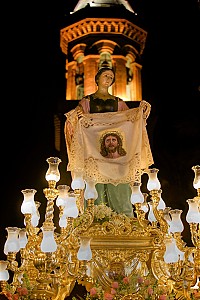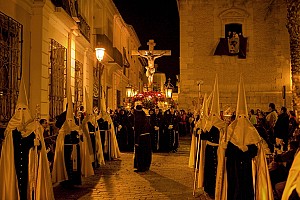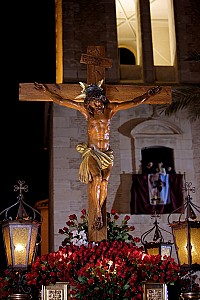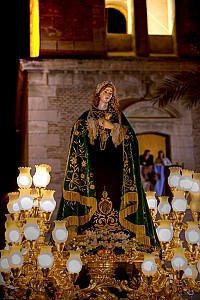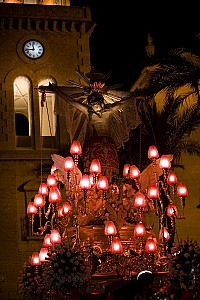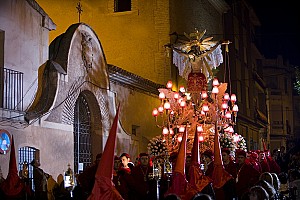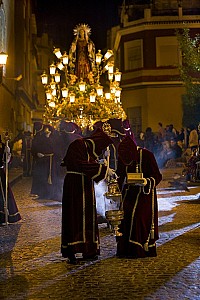Holy Wednesday Night
DESCRIPTION
What has always been considered the first great Parade of Holy Week in Cieza due to the number of Brotherhoods that participate, thirteen, and Brotherhoods participating in it, more than four thousand, is a narrative review of the main events of the Passion and Death of Christ, and others prior to these, which will have a broader development in the following days. It is the first occasion for the coming-out of many Ciezan Brotherhood and as it happened in the Arrest Procession, in this the Parade scheme of each Brotherhood is repeated: Script, Children's Tercio, Banner and Lanterns of Tercio, Tercio of Nazarenes, Tercio de anderos with the corresponding Paso and Banda, managing to once again make the Procession a compact and homogeneous set of successive passion scenes, emphasized punctually in the corners of the route where the Roman Tercio performs its traditional “Caracola”.
PECULIARITIES, INTEREST OF THE SHOW AND RECOMMENDATIONS
For any visitor, it is essential to go to the historic center of the Villa that afternoon to experience the unmistakable atmosphere of great celebration whose temperature rises as the departure time of the Procession approaches. Both inside the Basilica of the Assumption and in the neighboring House-Museums an intense activity of preparations is celebrated, between costumes, floral decorations, distribution of belongings, etc.; It should be noted that these spaces are open so that any visitor can enter and participate in this peculiar and lively atmosphere, whose festive and popular tone is increased by the Pasodoble Transfers that are held, together with the parade of some Children's Thirds.
And it is that in the Ciezana Holy Week the Transfers constitute another of those typical moments and not exempt, in addition, in some cases, of a manifest peculiarity. With an evolution parallel to that of the General Procession, it takes place from the last quarter of the s. XIX the "Bringing of the Saints": the Pasos that were going to participate in the Procession were transferred that same day from the place where they were guarded throughout the year to the Church. They left in two groups: from the Hermitage of the Santísimo Cristo del Consuelo they left San Juan, San Pedro, La Samaritana and also, for a while, the Santísimo Cristo del Consuelo; Santa María Magdalena and La Oración del Huerto were waiting for them at the corner of the town, and later La Flagellación joined the procession. With the construction of the Casa de los Santos at the beginning of the last decade of the seventies, the reason for the "Traída de los Santos" disappeared, but even today the Brotherhoods of San Juan and Santa María Magdalena have made that event a tradition that is renewed on the afternoon of every Holy Wednesday, with the joyful parade of two Pasos Titulares through the streets of Cieza.
The great Procession of the night supposes, for its part, a plastic summary of the Passion of Christ, in a solemn parade in which each Brotherhood contributes the color of its tunics, its heritage and its idiosyncrasy within a great story with a marked component epic. For this same reason, rather than a continuous wandering through the different corners of the route, it is advisable for the spectator to situate himself at a specific point in the parade, for example, on Calle San Sebastián, which will allow him to follow the chronological account of the events narrated. for the Procession.
Within the important heritage that is displayed on the streets that night, it is impossible to ignore the relevance of the carving of San Pedro (1948), by the great image artist Palma Burgos, and the throne on which he parades, made by Rubio Valverde (2005); the sculptural group of the Flagellation, with the Christ by González Moreno (1947), as well as the excellent imagery of the sculptural group of the Coronation of Thorns (2009), by Romero Zafra from Cordoba; and the image of Ecce-Homo, the last and royal processional work carved by González Moreno, without forgetting the beautiful nineteenth-century images of "Santa Verónica" and "Santa María Magdalena". All of them, together with those already mentioned of the “Stmo. Christ of Forgiveness" and the "Stma. Virgen de los Dolores", and to the ancient and devoted image of the Stmo. Cristo del Consuelo, are among the most important works of the imaginary heritage of Holy Week in Cieza.
ITINERARY
Plaza Mayor, Cid, La Parra, Rincón de los Pinos, Pinos, Larga, Buitragos, San Sebastián, Esquina del Convento, Mesones, Cadenas, Barco, Cánovas del Castillo and/or San Pedro and Plaza Mayor.
TIME
21:00
